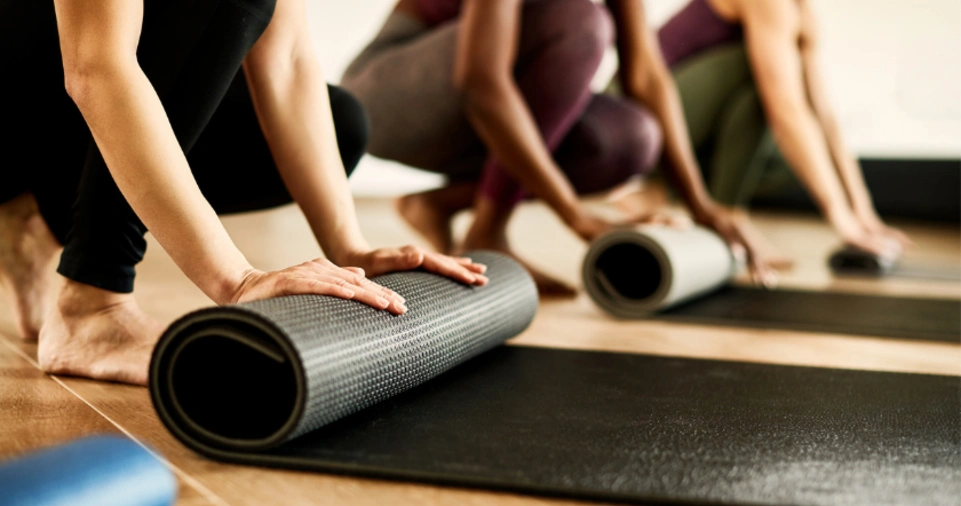Staying active is essential for maintaining good health, boosting energy levels, and improving overall well-being.
However, with busy schedules and daily responsibilities, finding time for exercise can be a challenge.
Fortunately, incorporating physical activity into your daily routine doesn’t have to be difficult. Here’s a comprehensive guide on how to make exercise a seamless part of your everyday life.
Benefits of Regular Exercise
Before diving into ways to incorporate exercise, it’s important to understand why regular physical activity is crucial:
- Improves Cardiovascular Health – Reduces the risk of heart disease and high blood pressure by enhancing blood circulation and heart function.
- Aids Weight Management – Helps burn calories, build lean muscle, and regulate metabolism for effective weight control.
- Boosts Mental Health – Releases endorphins that reduce stress, anxiety, and depression while enhancing cognitive function.
- Strengthens Muscles and Bones – Prevents osteoporosis, builds endurance, and supports overall skeletal health.
- Enhances Productivity and Focus – Increases energy levels, improves concentration, and fosters better decision-making skills.
- Improves Sleep Quality – Regular exercise promotes deeper and more restful sleep patterns, reducing the risk of insomnia.
- Enhances Immune System – Supports immune function by improving circulation and reducing inflammation.
- Increases Longevity – Active lifestyles contribute to a longer and healthier life by reducing risks of chronic diseases.
Strategies to Incorporate Exercise into Your Daily Routine

Start Your Day with Movement
Beginning your morning with a quick workout can set a positive tone for the day. Some simple morning exercises include:
- Stretching or yoga for 10-15 minutes to improve flexibility and circulation.
- A brisk 20-minute walk or light jog to awaken the body and mind.
- Bodyweight exercises like push-ups, squats, lunges, and plans to build strength.
- A short dance or aerobic session to boost energy levels and metabolism.
- Incorporating resistance bands for strength training in the morning.
Utilize Active Transportation
If possible, opt for active commuting methods instead of using a car or public transport. Consider:
- Walking or cycling to work, school, or nearby stores.
- Parking further from your destination to increase walking time.
- Taking the stairs instead of the elevator or escalator.
- Using public transport but getting off a stop earlier and walking the rest of the way.
- Investing in a foldable bike or electric scooter to encourage movement.
Desk Workouts for Office Workers
For those with sedentary jobs, incorporating movement into the workday can be beneficial:
- Stand up and stretch every 30 minutes to prevent stiffness.
- Use a standing desk or treadmill desk to improve posture and burn more calories.
- Perform seated leg lifts, shoulder shrugs, desk push-ups, or chair squats.
- Walk around during phone calls, meetings, or brainstorming sessions.
- Use resistance bands under the desk for arm and leg workouts.
Incorporate Exercise into Household Chores
Chores can be a great way to stay active while being productive:
- Vacuuming, mopping, or sweeping for a full-body workout.
- Gardening, raking leaves, or lawn mowing to strengthen muscles.
- Carrying groceries in multiple trips instead of one to increase steps.
- Washing the car manually instead of using an automatic car wash.
- Rearranging furniture or deep-cleaning spaces as a form of resistance training.
Take Advantage of Breaks and TV Time
- Perform short workouts during commercial breaks, such as jumping jacks, lunges, or sit-ups.
- Stretch while watching TV or listening to podcasts to maintain flexibility.
- Use resistance bands or light dumbbells during a favorite show.
- Set a reminder to do 10 squats or push-ups every hour.
Socialize with Physical Activities
Make fitness a social event by:
- Taking group fitness classes such as yoga, pilates, or dance.
- Organizing weekend hikes, outdoor runs, or park workouts.
- Playing recreational sports like basketball, tennis, soccer, or badminton.
- Enrolling in team-based activities such as rowing or martial arts.
Set Exercise Goals and Track Progress
Keeping track of your fitness journey keeps you motivated:
- Use fitness trackers, smartwatches, or mobile apps to monitor activity levels.
- Set realistic goals like step count, calories burned, or strength benchmarks.
- Join an online fitness challenge or accountability group for motivation.
- Keep a workout journal to log progress and stay consistent.
Multitask with Physical Activities
- Walk while reading or listening to audiobooks to stay engaged.
- Do bodyweight exercises like squats or lunges while waiting for food to cook.
- Pace around while brainstorming or problem-solving.
- Perform calf raises while brushing your teeth.
Incorporate Family-Friendly Fitness
Encourage an active lifestyle for the entire family:
- Plan outdoor activities like cycling, hiking, or beach outings.
- Organize family-friendly workout sessions at home.
- Involve kids in sports, dance, or fun obstacle courses.
- Take evening strolls together after dinner.
Prioritize Evening Workouts
If mornings are too hectic, consider exercising in the evening:
- A relaxing evening walk to wind down and destress.
- Strength training or home workouts before or after dinner.
- A yoga session to improve flexibility and relaxation.
- A light jog or treadmill session to end the day with movement.
ALSO READ: How to Build a Strong Brand Identity for Your Business?
Creating a Daily Exercise Plan

Here’s a sample weekly workout plan that incorporates different activities:
| Day | Activity | Duration |
|---|---|---|
| Monday | Morning jog, yoga & stretching | 45 mins |
| Tuesday | Strength training & core workout | 50 mins |
| Wednesday | Cycling or walking to work | 40 mins |
| Thursday | Office desk exercises & yoga | Throughout |
| Friday | Recreational sport or cardio | 60 mins |
| Saturday | Outdoor hike or family activity | 75 mins |
| Sunday | Active recovery, light stretching | 30 mins |
Tips for Staying Motivated
- Make it Fun – Choose activities that you genuinely enjoy.
- Stay Consistent – Build a routine that aligns with your lifestyle.
- Find an Accountability Partner – Exercise with friends, family, or coworkers.
- Reward Yourself – Set milestones and celebrate progress with non-food rewards.
- Keep It Flexible – Adapt workouts to your schedule and energy levels.
- Switch It Up – Avoid monotony by trying new exercises, classes, or routines.
- Visualize the Benefits – Remind yourself of why staying active is important.
ALSO READ: How to Use Accounting Software to Simplify Bookkeeping?
Conclusion
Incorporating exercise into your daily routine doesn’t have to be overwhelming. By making small but consistent changes, you can stay active, improve your health, and boost your overall well-being.
Start with minor adjustments and gradually build up to a more structured fitness routine. Remember, every step counts towards a healthier you!
Whether it’s taking the stairs, doing stretches, or making social gatherings more active, movement should be a natural and enjoyable part of life. Stay committed, keep moving, and embrace the benefits of an active lifestyle!







